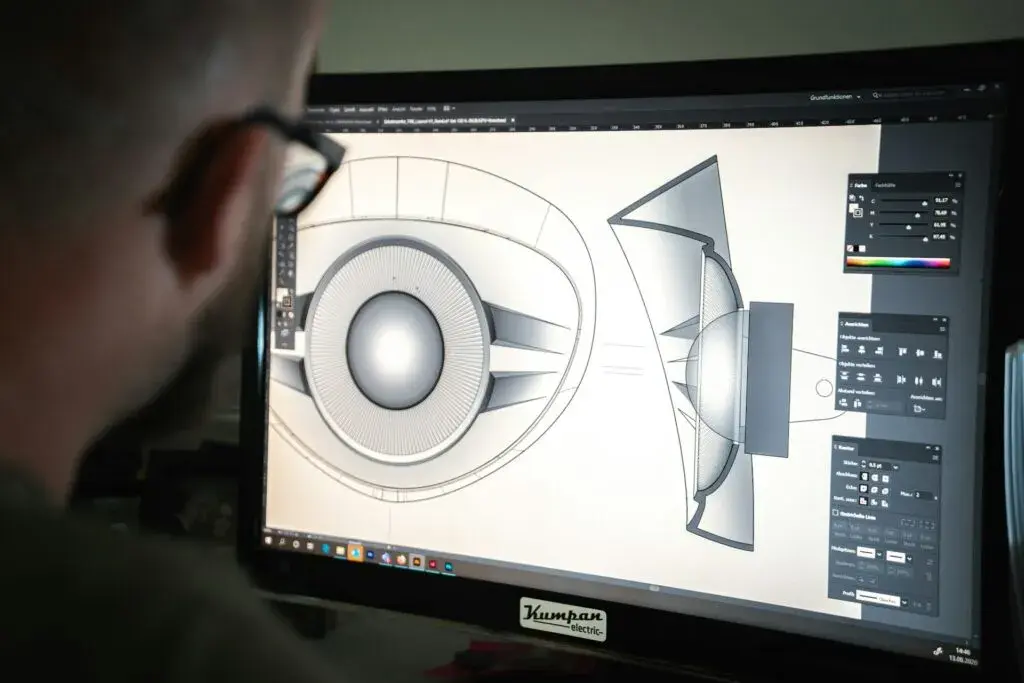
In 2025, architecture firms around the world are facing an urgent hiring challenge: finding a skilled Computational Designer. The shift toward parametric design firms and digital-first workflows has accelerated, and the talent pool is struggling to keep up.
Top design practices report difficulty filling computational design positions. According to the RIBA AI Report, 59% of architecture firms now use AI and computational design tools, up from 41% in 2024, showing just how fast these technologies are becoming standard. Job postings mentioning Grasshopper, Python, or Dynamo are increasing rapidly, and salaries for computational roles are growing faster than for traditional architect roles, making them some of the Top Architecture Jobs with Best Salaries.
From BIM process automation to facade optimization and generative workflows, computational designers are no longer niche hires; they are essential to winning projects, streamlining operations, and staying competitive. The careers in architecture include highly remunerative work and are characterized by innovative ways and sophisticated technology, owing to this demand.
The Evidence for a Skills Crisis

The information provides a clear picture of the increasing mismatch between skills demands in the market and availability of specialists 87% companies report certain skills shortages slowing business growth and progress. Open postings of the required skills in the computational design category have grown enormously, and 46% design leaders report AI-based skills as a top hiring priority, up by 41% in 2024.
Many parametric design firms list computational designers as their highest hiring priority. Very few architecture graduates flow out of school with the ability to write scripting, the algorithmic design tools. Another phenomenon relates to several companies losing contracts as they did not have sophisticated digital processes, like BIM automation tools, in their organization. There are 1.4 million open positions in the technological industry linked to computational design and automation skills expected to build up worldwide by 2025.
This makes more than a hiring problem- this is a productivity bottleneck. Without computational designers, firms become sluggish in their response, uncompetitive on complex tenders, and lose their place in a market where parametric flexibility, environmental sensitivity, and ready-to-build modelling are becoming the norm.
What Computational Design Firms Need That Traditional Architects Can’t Provide?

Design intuition, aesthetic judgment, and project management are invaluable to bring to a project held by traditional architects. However, with technologies on highly complicated digital practices, their training has made them ill-equipped.
Computational Designers fill this gap by delivering:
- Algorithmic problem-solving: the ability to turn the intent of design into parametric rules that take only several minutes to generate dozens or hundreds of iterations.
- Automation & efficiency: leveraging BIM process automation to eliminate repetitive tasks, freeing teams for higher-value creative work.
- Performance-based design: Creating site-specific applications that address a particular design task to optimize facade or create a drawing set..
- Custom tool creation: Writing Python or Dynamo scripts to automate specific workflows, such as facade optimization or developing automation of documentation tasks.
- Data interoperability: Integrating Rhino inside Revit, and analysis software for seamless cross-platform workflows
Also Read: Why Architects Are Earning 50% More With Computational Design Skills?
What Skills Are Required to Become a Computational Designer?

Being a successful Computational Designer will require a combination of technical expertise, artistic problem-solving, and communication. Here is what employers are seeking:
Technical Skills
1. Software Proficiency
To compete for the high paying jobs in architecture, you will have to :
- Learn Rhino 3D and Grasshopper 3D for parametric geometry
- BIM automation tools and Revit integration with Dynamo
- Ladybug/Honeybee visualizing an environmental model and daylighting simulation.
- Karamba or Scan & Solve structural performance analysis
- Houdini as a generative systems and in-depth visual scripting
- Visualization using Enscape, V-Ray, or Twinmotion
2. Scripting & Programming
Coding skills are becoming non-negotiable:
- Python: To script, process data, and automate Grasshopper
- C# or VB.NET: To develop custom plugins in Rhino or Revit
- JavaScript: Web-based interactive parametric tools
3. Portfolio Projects (employers want proof, not just claims)
Highlight practical examples that show skills in creativity as well as technology implementation such as:
- Respondent parametric facades to sun-path and energy performance
- Mechanized interior design for BIM databases
- Density, traffic, and green space data included in generative urban layouts
- Facade optimization models to be fabricated by CNC or robotically
Soft Skills (from real job portal listings)
In addition to tools, the following are valuable to computational design firms:
- Analytical problem-solving for complex constraints
- Working with engineers, sustainability consultants, and fabricators
- Adaptability to rapidly evolving tools and plugins
- Strong research habits tracking new methods, libraries, and case studies
- The visualization of algorithmic processes
The Window of Opportunity: Why Upskilling Now Is Critical for Architects

The computational design boom isn’t a fad it’s the foundation of how parametric design firms will operate in the coming decade. Firms adopting BIM process automation and data-driven workflows are gaining measurable advantages:
- Speed: Automation shortens delivery times by 40–60%
- Cost efficiency: Parametric models reduce rework and fabrication errors
- Client appeal: Interactive models and performance data win high-profile bids
How Can You Turn This Crisis Into a Career Opportunity?
Rather than waiting and hoping the market evolves in your favor, you can take measures today to be ready to take on one of the highest-paying architectural job roles.
Our Master in Computational Design Course was built in partnership with architecture firms actively seeking talent, ensuring you graduate with the computation design skills that matter most. Our Course also is created in partnership with the same firms for talent. Get job-ready with a curriculum co-designed by leaders at Zaha Hadid, UNStudio, and more.
Key Course USPs
- Co-designed with top parametric design firms for maximum relevance
- Master Rhino 3D, Grasshopper 3D, Dynamo, and essential scripting
- Hands-on BIM process automation and custom tool development
- Portfolio projects in facade optimization, generative urbanism, and environmental design
- Mentorship from active computational designers at global firms
- Career guidance into the Top Architecture Jobs with Best Salaries
Conclusion
Learning Computational design Skills transition an architect from manual drafting to building reusable automation that saves time, reduces risk, and unlocks better roles. Glassdoor data for computational designer salary in Dubai, India, and the USA shows a consistent premium band that often sits at 30–50% above standard Architect Salary ranges. By learning tools like Rhino 3D, Grasshopper, Dynamo, Python, and focusing on facade optimization and BIM process automation, professionals position themselves for high paying jobs in architecture and clearer career pathways. A targeted Computational design course with portfolio outcomes is the most practical way to make that transition and justify the salary uplift.
Boost your career with the Master in Computational Design by Novatr, gain in-demand skills, master industry-leading tools, and position yourself for top-paying architecture roles.
Visit our resource page to get started and receive expert guidance on advancing your career.
Was this content helpful to you



.jpg)




